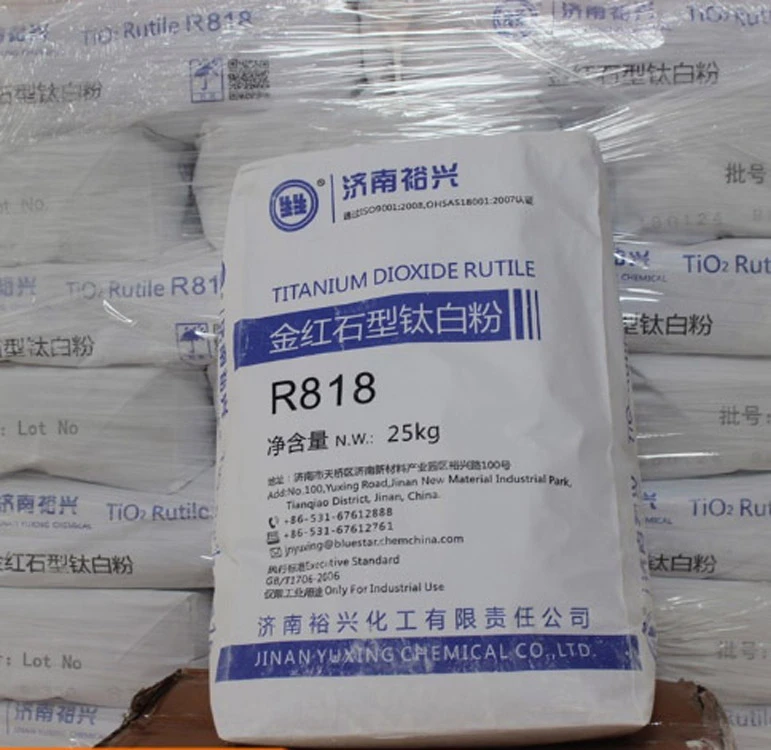
Sep . 27, 2024 22:40 Back to list
Exploring the Market Trends of Titanium Dioxide Pigment in China
The Rise of Titanium Dioxide Pigments in China's Market
Titanium dioxide (TiO2) is a vital pigment widely utilized in various applications, notably in paint, coatings, plastics, and even in food products. As one of the most significant players in the global titanium dioxide market, China’s production and consumption trends have broad implications on both local and international levels. This article explores the factors driving the growth of TiO2 pigments in China, the associated challenges, and the outlook for the future.
Market Overview
China is the largest producer and consumer of titanium dioxide pigments in the world. Over the past few years, the country has experienced significant growth in its industrial output, largely fueling the demand for TiO2. The pigment's superior properties—such as excellent opacity, brightness, and weather resistance—make it ideal for various industries. The construction and automotive sectors, in particular, have been major contributors to the rising demand. As urbanization continues to expand rapidly in China, the need for high-quality paints and coatings has surged, consequently boosting the TiO2 market.
Key Applications
The primary use of titanium dioxide in China is within the coatings industry, which encompasses both architectural and industrial applications. The pigment is essential for providing whiteness and opacity in paints, enabling manufacturers to create durable and aesthetically pleasing surfaces. In addition to coatings, TiO2 is extensively used in plastics, where it enhances UV stability and improves the material's life cycle. Additionally, the food industry employs titanium dioxide as a whitening agent in several products, although its usage has raised some health concerns, prompting ongoing research regarding its safety.
Environmental Concerns and Regulations
china tio2 pigment

Despite its utility, the production of titanium dioxide is not without its challenges. The manufacturing process can be environmentally taxing, with waste products posing significant ecological risks. In response to growing environmental awareness, the Chinese government has implemented stricter regulations aimed at controlling pollution and ensuring sustainable manufacturing practices. This regulatory landscape is prompting many manufacturers to invest in cleaner technologies and more efficient processes, which, while potentially increasing costs, may foster innovation and reduce long-term environmental impacts.
Competitive Landscape
China's TiO2 pigment market is characterized by intense competition, with several major players dominating the industry. Companies such as Chemours, Kronos, and Shanghai Huayi are pivotal in shaping market dynamics. The competitive environment drives continual advancements in manufacturing techniques and product quality, pushing firms to innovate in order to retain their market positions. Moreover, as global demand for environmentally friendly products grows, companies are exploring alternative TiO2 production methods that minimize environmental impact while maintaining performance.
Future Outlook
Looking ahead, the TiO2 pigment market in China is poised for continued growth. Factors contributing to this expansion include increased industrial activities, urbanization, and a rising demand for high-quality coatings. Nonetheless, with ongoing global efforts to transition toward sustainability, the Chinese industry must adapt accordingly, embracing eco-friendly practices and innovations.
In conclusion, the titanium dioxide pigment industry in China is a vital component of the nation's broader economic landscape. As the market evolves, maintaining a balance between production efficiency and environmental responsibility will be critical. The future of TiO2 in China looks promising, marked by opportunities for growth and the potential for innovation within a competitive global framework.
-
China Lithopone in China Supplier – High Quality Lithopone ZnS 30% Powder for Wholesale
NewsJun.10,2025
-
Top China Titanium Dioxide Company – Premium TiO2 Powder Supplier & Manufacturer
NewsJun.10,2025
-
Fast Shipping 99% Pure TiO2 Powder CAS 13463-67-7 Bulk Wholesale
NewsJun.10,2025
-
Top China Titanium Dioxide Manufacturers High-Purity R996 & Anatase
NewsJun.10,2025
-
Lithopone MSDS Factories - Production & Quotes
NewsJun.10,2025
-
High-Quality Titanium Dioxide in Water Suppliers - China Expertise 60
NewsJun.09,2025
